When visiting temples or shrines in Japan, please remember that these are sacred places. Any behavior that shows disrespect — such as touching sacred objects, entering restricted areas, or making noise — can be seen as both culturally offensive and legally punishable under Japanese law (Article 188 of the Penal Code).
This article is a complete overview of the most important shrines and temples in Nagoya.
History and Significance
Atsuta Shrine is the largest and most important Shinto shrine in Nagoya City, renowned for enshrining the sacred sword Kusanagi-no-Tsurugi , one of the Three Imperial Regalia of Japan. Although the sword was reportedly stolen or lost at times throughout history, the original is still believed to be housed at the shrine today.
With a history spanning over 1,900 years, Atsuta Shrine has long been a place of deep reverence for powerful leaders. During the Sengoku period(1467-1568), famous warlords such as Oda Nobunaga visited the shrine to pray for victory in battle, further cementing its historical and spiritual significance.
During the New Year season, the shrine becomes extremely crowded as it draws millions of visitors for hatsumode , the first shrine visit of the year. It’s best to avoid this period if you prefer a quieter experience. On other days, while the shrine remains popular, the crowds are generally manageable.
The shrine grounds are spacious and filled with ancient, well-preserved trees that offer a peaceful, scenic environment. It’s an ideal place for a relaxing walk and to soak in the atmosphere of one of Japan’s most sacred sites.
How to Get There
Atsuta Shrine is conveniently located and accessible from several train stations in Nagoya:
Jingū-Mae Station (Meitetsu Line) – This is the closest station to Atsuta Shrine. It’s about a 3-minute walk from the station’s south exit to the shrine’s main entrance.
Atsuta Station (JR Tokaido Line) – From here, it takes approximately 7 minutes on foot to reach the shrine.
Tenma-cho Station (Subway Meijo Line) – The shrine is about a 10-minute walk from this station.
All of these stations provide easy access for visitors coming from Nagoya Station or other major transit hubs in the city. Clear signage and a pleasant walking route make the journey to the shrine simple and enjoyable.
What to See
Kusanagi-kan, located within the grounds of Atsuta Shrine, is a museum that showcases the shrine’s remarkable collection of over 400 Japanese swords. The exhibits are rotated monthly, allowing visitors to see different swords each time, including many with historical and artistic significance. It offers a unique opportunity to appreciate the craftsmanship and legacy of traditional Japanese sword-making.
Toyokuni Shrine
Entity enshrined: Toyotomi Hideyoshi
Nearest Stations: Nakamura koen station (Higashiyama line) (7-minute walk from the station)
Website: http://toyokuni-jinja.jp/
History and Significance
Toyokuni Shrine in Nagoya is dedicated to Toyotomi Hideyoshi, the legendary warlord who unified Japan in the late 16th century. While the shrine itself was established in 1885, it holds great historical significance as it is believed to stand on the exact site where Hideyoshi was born.
This shrine is one of several Toyokuni Shrines across Japan, with the main shrine located in Kyoto, which was built in 1599 shortly after Hideyoshi’s death. These shrines collectively honor his enduring legacy and contributions to Japanese history.
Despite being relatively modern, the Nagoya shrine is deeply cherished by locals. Its grand stone torii gate and scenic approach create a powerful and respectful atmosphere worthy of the great unifier it commemorates.
How to Get There
Toyokuni Shrine is located in Nakamura Park, near the birthplace of Toyotomi Hideyoshi. It is easily accessible from the following stations:
Nakamura Koen Station (Subway Higashiyama Line): About a 7-minute walk to the shrine.
Nakamura Nisseki Station (Subway Sakura-dori Line): Around a 10-minute walk.
JR Nagoya Station: Approximately 20 minutes on foot, or a short subway ride to either of the stations above.
The shrine is located within a quiet park area, making the walk peaceful and pleasant.
What to See
Myokoji temple One of the highlights of Toyokuni Shrine in Nagoya is the spot believed to be the birthplace of Toyotomi Hideyoshi, located within the shrine grounds. At the entrance to the shrine approach, visitors are greeted by a massive stone torii gate, creating a striking and powerful impression.
👉 Read our detailed guide to Toyokuni shrine in Nagoya to learn more about its history, highlights, and visiting tips.
The surrounding area is also rich in history. Just a short walk from the shrine is Myōgyō-ji Temple, known as the birthplace of Kato Kiyomasa, one of Hideyoshi’s most famous and loyal generals during the Sengoku period. Visiting both sites offers a deeper appreciation of the historical legacy rooted in this part of Nagoya.
Miwa Shrine
Entity enshrined: Omononushi
Nearest Stations: Kamimaezu station (Meijo line) (5-minute walk from the station)
Website: https://miwajinnjya.com/
History and Significance
Miwa Shrine is located in the heart of Osu Shopping Street, a lively district in Nagoya often described as a mix between Asakusa and Akihabara, blending tradition with modern subculture. The area attracts countless visitors, including many international tourists, and has long been known for its rich concentration of temples and shrines.
Miwa Shrine is especially popular among those seeking good luck in relationships. Beyond its spiritual charm, the shrine also holds historical significance—it is said to be the origin of the name Yabachō, a nearby neighborhood. In the past, archery (yaba ) was practiced on the grounds of the shrine, giving rise to the area’s name.
How to Get There
Miwa Shrine is located within the Osu Shopping District and is easily accessible by public transportation:
Yabachō Station (Subway Meijo Line): About a 5-minute walk from Exit 4.
Kamimaezu Station (Subway Meijo Line and Tsurumai Line): Around a 7-minute walk from Exit 8.
Osu Kannon Station (Subway Tsurumai Line): Approximately a 10-minute walk.
What to See
At Miwa Shrine, you’ll find a charming rabbit statue that visitors gently touch for good luck, especially in matters of love and relationships.
The rabbit is a sacred animal associated with Ōmononushi-no-Kami, the deity enshrined at Miwa Shrine. In Japanese mythology, this god is said to have taken the form of a white rabbit to guide people, which is why rabbits are seen as messengers of the divine and symbols of good fortune here.Touching the statue is believed to invite happiness and strengthen romantic bonds.
Since Miwa Shrine is located within the Osu Shopping District, it is surrounded by various temples and historic buildings, making the area perfect for a cultural stroll.
👉 Read our detailed guide to Miwa shrine in Nagoya to learn more about its history, highlights, and visiting tips.
Nagoya Toshogu
Entity enshrined: Tokugawa Ieyasu
Nearest Stations: Marunouchi Station (Sakuradori line) (5-minute walk from the station)
Website: https://nagoyatoshogu.com/
History and Significance
Nagoya Tōshō-gū is a historically significant shrine dedicated to Tokugawa Ieyasu, the founder of the Tokugawa shogunate. Built in 1619 by his ninth son, Lord Tokugawa Yoshinao, it reflects the deep reverence held for Ieyasu in the Owari domain and was once part of the grounds of Nagoya Castle.
Today, while the shrine is relatively quiet and lesser-known compared to more famous sites, it has become a hidden cherry blossom spot in spring. Visitors who stumble upon it during sakura season are rewarded with a peaceful, scenic view—far from the crowds, yet rich in atmosphere and history.
How to Get There
Marunouchi Station (Tsurumai Line, Exit 1): roughly a 3-minute walk
What to See
Nagoya shrine
Just a short walk from Nagoya Tōshō-gū is Nagoya Shrine, another peaceful spot with a long history. Like Tōshō-gū, it’s also known as a hidden cherry blossom viewing spot in the spring. The proximity of these two shrines makes the area a pleasant place to explore both culture and seasonal beauty.
👉 Read our detailed guide to Nagoya toshogu in Nagoya to learn more about its history, highlights, and visiting tips.
In addition to the shrine introduced this time, there are many other shrines in Nagoya. If you’re interested, click the button below to browse
Osu Kannon
Sect: Shingon-shū Chisan-ha
Nearest Stations: Osukannon Station (Tsurumai line) (5-minute walk from the station)
Website: https://www.osu-kannon.jp/
History and Significance
Osu Kannon is a temple located in the Osu Shopping Street area and is one of Nagoya’s iconic tourist spots. The shopping street is filled with unique and interesting shops, so it’s worth visiting while taking a stroll around the area.
How to Get There
Ōsu Kannon Station (Subway Tsurumai Line): Take Exit 2, and the temple is just a 1-minute walk from the station.
What to See
One of the highlights of Ōsu Kannon Temple is the antique market held on the 18th and 28th of every month. On these days, the temple grounds come alive with vendors selling a wide variety of antiques, vintage items, and collectibles. It’s a great opportunity to experience local culture and find unique souvenirs.
👉 Read our detailed guide to Osu kannon in Nagoya to learn more about its history, highlights, and visiting tips.
Higashi Betsuin temple
Sect: Shinshu ohtani-ha
Nearest Stations: Higashi betsuin station (Meijo line) (5-minute walk from the station)
Website: https://www.ohigashi.net/
History and Significance
Higashi Betsuin is a temple of the Jodo Shinshu Otani sect. Although it is an impressive temple, most of the original structure was destroyed during air raids, so the current buildings were rebuilt after the war. Higashi Betsuin hosts a market on the 8th, 18th, and 28th of every month, offering a wide variety of items. It’s enjoyable just to browse and see what’s available.
How to Get There
Higashi Betsuin Station (Subway Meijō Line): Take Exit 4, and the temple is just a 3-minute walk away.
What to See
One of the main attractions of Higashi Betsuin Temple is its monthly morning market, held on the 8th, 18th, and 28th of each month. Local vendors sell fresh produce, handmade goods, and street food, creating a lively and welcoming atmosphere.
In addition, the temple hosts a large antique market every spring and autumn, drawing collectors and visitors from across the region. These seasonal events offer a unique chance to experience both the temple’s peaceful setting and the charm of traditional Japanese market culture.
👉 Read our detailed guide to Higashi betsuin temple in Nagoya to learn more about its history, highlights, and visiting tips.
Yagoto Koshoji temple
Sect: Koyasan Shingon-shu
Nearest Stations: Yagoto station (Meijo line) (5-minute walk from the station)
Website: https://www.koushoji.or.jp/
History and Significance
Koshoji Temple in Yagoto is a Shingon-sect temple, just a 5-minute walk from Yagoto Station. The temple grounds are spacious and perfect for a stroll. Many of the buildings on-site are of significant historical value. On weekdays, it’s usually quiet with few visitors, making it an ideal spot for those who prefer a peaceful walk.
How to Get There
Yagoto Station (Subway Tsurumai Line and Meijō Line): Take Exit 1 , and the temple is about a 5-minute walk from the station.
What to See
One of the highlights of Kōshō-ji Temple in Yagoto is its regular temple fairs, known as ennichi , held on the 5th, 13th, and 21st of every month. On these days, the temple grounds fill with lively stalls selling food, antiques, handmade goods, and more. It’s a great chance to enjoy local flavors and traditional market culture in a relaxed, community atmosphere.
👉 Read our detailed guide to Yagoto Koshoji temple in Nagoya to learn more about its history, highlights, and visiting tips.
Toganji Temple
Sect: Soto shu
Nearest Stations: Motoyama station (Meijo line) (3-minute walk from the station)
Website: –
History and Significance
Toganji Temple is known for its large green Buddha statue, though the statue itself was constructed in modern times. The temple was established at its current location in the 1700s. Its architecture is quite unique, with a vibe that feels more like India or Thailand than a typical Japanese temple. Since there are a lot of mosquitoes, it’s best to visit in late autumn or winter.
How to Get There
Motoyama Station (Subway Higashiyama Line or Meijō Line): Take Exit 2, and the temple is about a 7-minute walk from the station.
What to See
The main attraction of Tōganji Temple is its striking green Great Buddha statue, a unique and unexpected sight nestled among the trees. In addition, just a short walk from the temple, you’ll find Yōkiso, a beautifully preserved historical garden and residence that once belonged to a wealthy businessman. It offers a peaceful retreat and a glimpse into early 20th-century Japanese architecture and landscaping.
👉 Read our detailed guide to Toganji temple in Nagoya to learn more about its history, highlights, and visiting tips.
Nittaiji Temple
History and Significance
Nittai-ji Temple houses the ashes of the Buddha, which were sent from Thailand. It is a symbolic landmark in the historic area of Kakuozan, known for its preserved old buildings. The surroundings of Nittai-ji also feature other interesting historical structures, making it a great spot to explore.
How to Get There
Kakuōzan Station (Subway Higashiyama Line): Take Exit 1 , and walk about 10 minutes along the lively approach road lined with cafes and shops.
What to See
One of the highlights of Nittaiji Temple is the monthly temple fair, held on the 21st of every month. On this day, the approach to the temple becomes lively with food stalls, antique vendors, and local craftspeople. It’s a great opportunity to enjoy traditional market culture in a relaxed and friendly atmosphere.
👉 Read our detailed guide to Nittaiji tepmle in Nagoya to learn more about its history, highlights, and visiting tips.
Kenchuji Temple
Sect: Jodo-shu
Nearest Stations: Kurumamichi station (Sakuradori line) (10-minute walk from the station)
Website: http://www.kenchuji.com/
History and Significance
Kenchuji Temple is associated with the Owari branch of the Tokugawa family and has a mausoleum for the Tokugawa clan on its grounds, although you cannot enter the mausoleum itself. The temple appears to have escaped the air raids of World War II, so the wooden structures built between the 1600s and 1800s are still preserved in their original form. It’s free to enter, and there are usually few visitors.
How to Get There
Kurumamichi Station (Subway Sakura-dori Line): Take Exit 1, then walk about 10 minutes north. The route is straightforward through quiet residential streets, leading directly to Kenchūji Temple.
What to See
One of the highlights of Kenchūji Temple is its Sanmon Gate, a historically significant structure that showcases traditional Japanese temple architecture. The gate has stood for centuries and serves as an important symbol of the temple’s rich heritage.
Kenchūji is also located in the “Cultural Path ” (Bunka-no-Michi) area, which is home to several other historic buildings from the Meiji and Taishō periods. As you explore the neighborhood, you’ll find Western-style mansions, former residences of notable figures, and preserved architecture that offers a glimpse into Nagoya’s modern history.
👉 Read our detailed guide to Kenchuji tepmple in Nagoya to learn more about its history, highlights, and visiting tips.
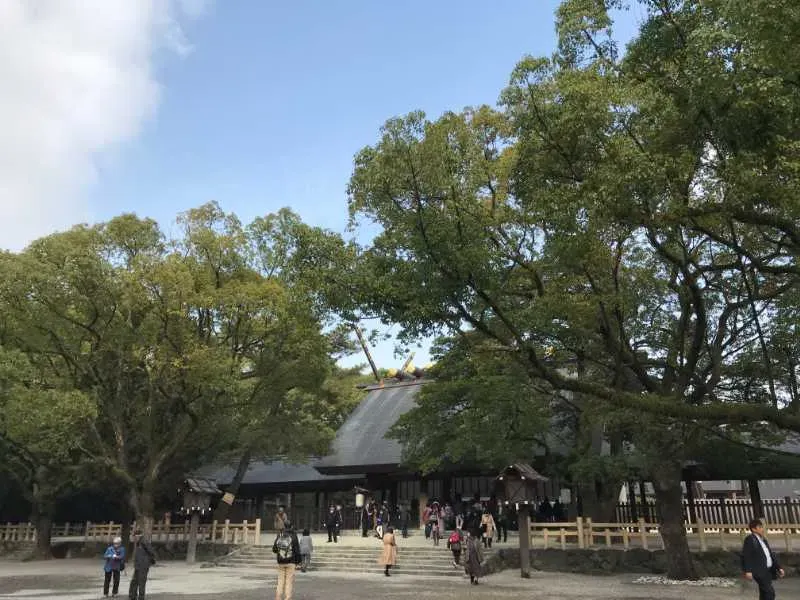
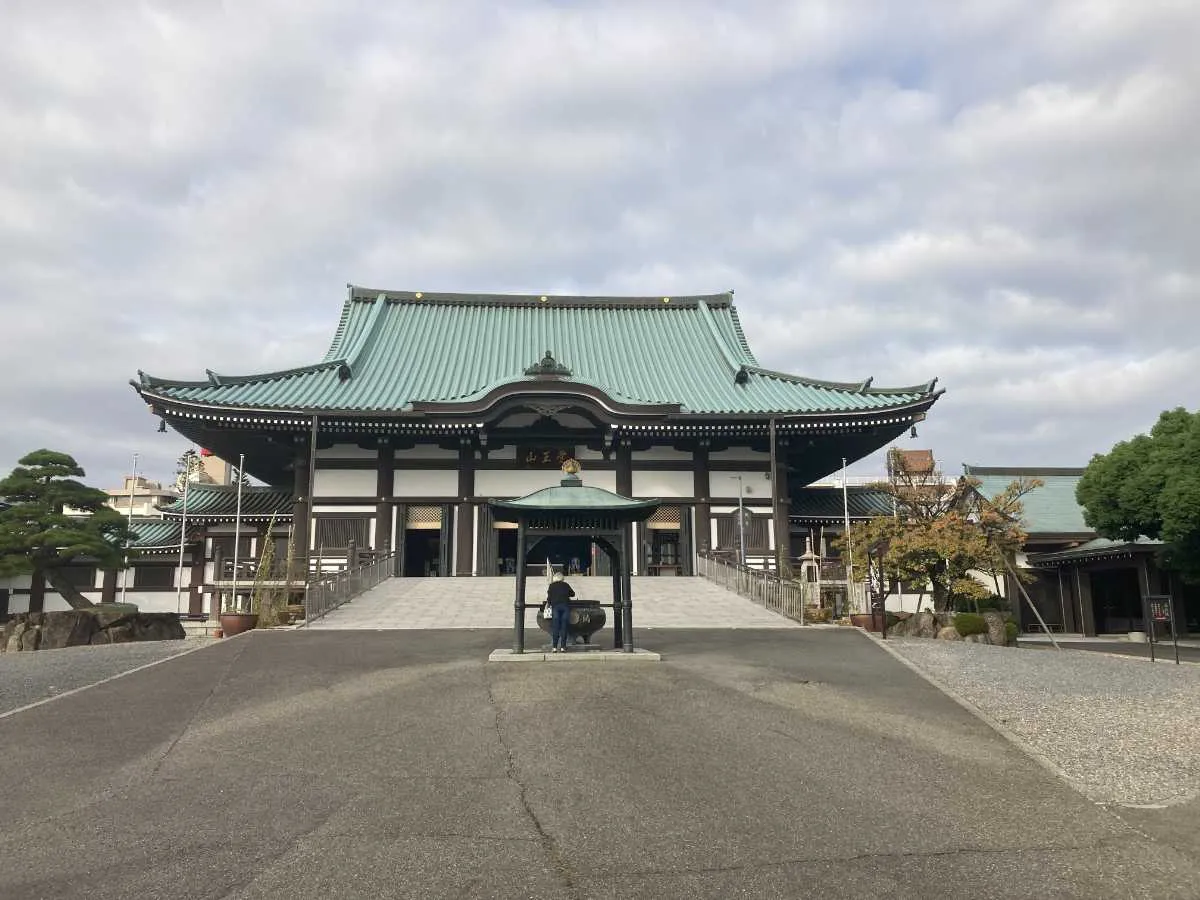



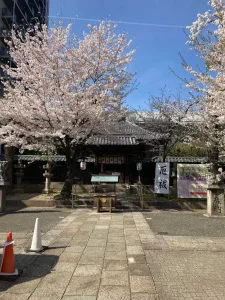

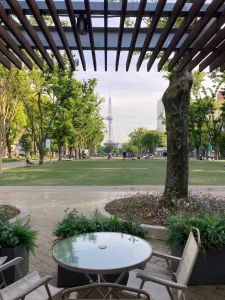

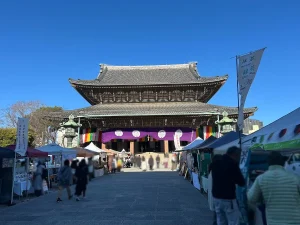

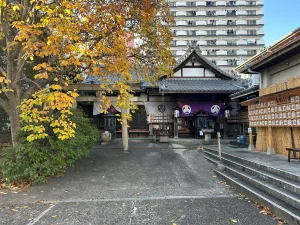

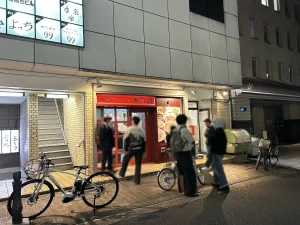



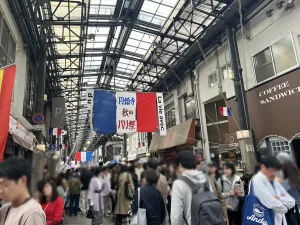

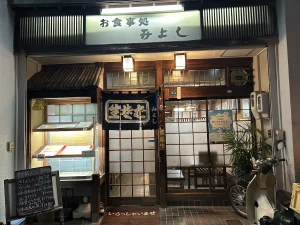

LEAVE A REPLY